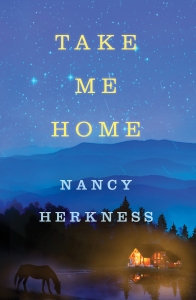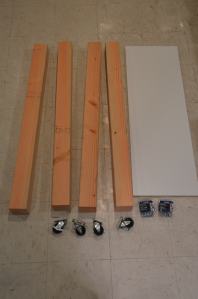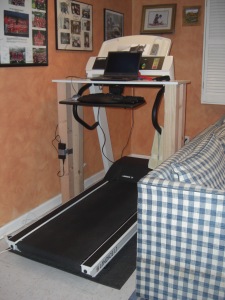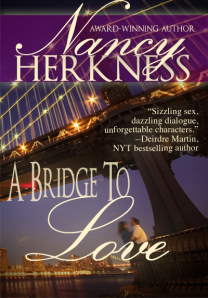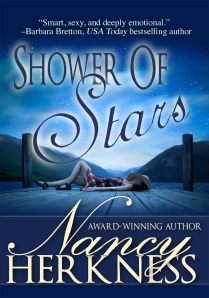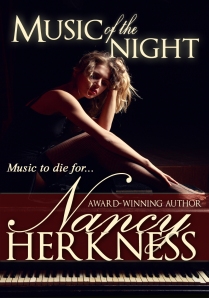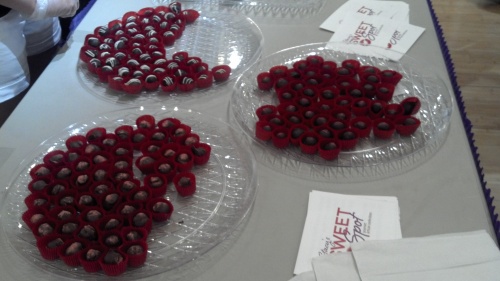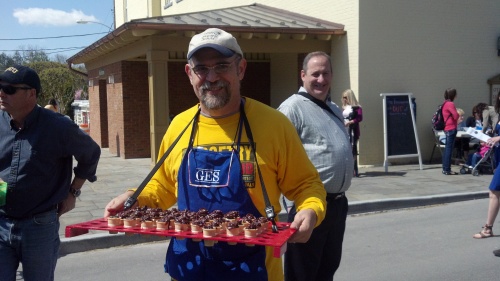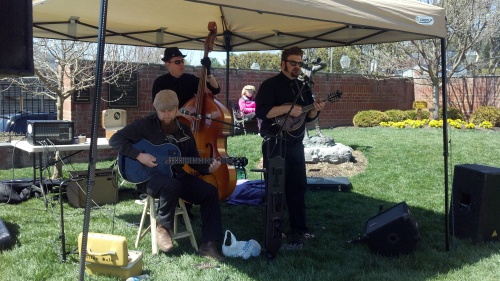Blog
Poets CAN make money!
As a former poet (in college), I was happy to see this article in the Wall Street Journal, explaining that some poets have figured out how to make money from their writing:
Some writers now in the poetry business are capitalizing on the demand for custom stanzas. Carolyn Schwartz was working as an organizational psychologist when she began writing poetry for friends and family. In 2006, she decided to try making money from it. She started an online business called Poems by Carolyn which she operates out of her home in Woodbury, Long Island, and today receives eight to 10 orders a month. Most of the requests, she said, come in the form of pleas.
“I’m part-ghostwriter, part-poet, part-therapist,” she said. “People feel a lot of pressure to find the right words, so they’ll write in and say, ‘Please, help me!'”
A standard poem for a candle-lighting ceremony or birthday costs $550, which includes a visit, unlimited changes, a laminated copy of the poem and even speech rehearsals. Clients outside of driving distance are charged $100 less.
via Festival Celebrates Poetry at Governors Island – WSJ.com.
Most of the poems are composed for happy occasions but there are some sad stories too:
The custom poets say it’s hard not to befriend clients after sharing poignant moments in the poems they order up. Ms. Alcivar said that in 2010, she was hired to compose poetry for a wedding by friends of the bride. A year later, they called her again, this time to write for a funeral—the former bride had died of pancreatic cancer.”
“These occasions make sense to me because they’re about things people don’t know how to talk about,” she said. “Love and joy, grief and death. When they can’t find the words, poets become that placeholder.”
Ms. Alcivar understands the true nature of poetry.
Half-price Sale on TAKE ME HOME!
Yeehaw! Amazon is offering Take Me Home for half-price on Kindle and in print.
If you’d like to buy it on Kindle for $2.00, click here.
If you’d like a print copy for $6.48, click here.
Enjoy your reading and let me know what you think!
Write-Walking: Notes from my Treadmill Desk
I took my maiden voyage on my DIY treadmill desk last night and thought you might want a report on whether it worked or not.
Statistics:
Time: 78 minutes
Distance: 1.9 miles
Speed: 1.2 – 1.5 mph
Words written: 1,063
Calories burned: 235
Notes:
I got so lost in the story, I forgot I was walking until about 55 minutes had passed, at which point I realized I was actually tired. So I took a short break to watch a snippet of “Mad Men” with Handsome Husband. Then I got back on the treadmill to finish writing the scene.
I started at 1.2 mph, got used to it, decided it was too slow, and upped my pace to 1.5 mph. I hear most folks top out at 2.0 mph, so that’s my goal.
Typing while walking was no problem at all. Mouse-ing was more of a challenge. First, the mouse tends to waltz off the keyboard tray when I start typing. So I have to move it up to the desk when I’m not using it. Second, the cursor requires precise positioning on the screen which is not so easy when you’re in full stride. When I finished typing for the night, I admit to turning the treadmill off so I could do all my document saving procedures from a stationary position. However, I am sure I’ll perfect mobile mouse-ing with practice.
I drank a lot of water while write-walking. Good thing I have a refrigerator in the basement!
My productivity was high while walking. Of course, I was in the middle of a very hot scene between my hero and heroine in THE PLACE I BELONG, so that may have sharpened my focus. Walking has always helped me think though, so I figure the motion itself contributes to brain activity.
The Preliminary Verdict:
The Treadmill Desk looks like it will be good for me both on the exercise and productivity fronts. It’s nice to have another place set up to work too, just for variety’s sake. I use Dropbox to save my documents so it’s easy to pick up where I left off, no matter which computer I’m working on. The wonders of modern technology!
Now if it helps me lose weight, I will be totally in love with it.
My Proud Accomplishment: A DIY Treadmill Desk
I did it! I built myself a treadmill desk for less than $200.00! And half of that cost was in the sturdy keyboard tray I decided was necessary for my ergonomic keyboard (since I can’t type decently on anything else anymore).
This project started when I read an article about how people who sat at desks all day were developing all kinds of health problems. To counteract this, a couple of innovative companies offered the option of a treadmill desk where you can walk and work at the same time. I love to walk and I own a treadmill so I decided this was a no-brainer for me.
Except the treadmill desks you could buy ready-made cost thousands of dollars (and probably wouldn’t fit my treadmill).
Since I’m the daughter of an engineer I decided I would build one myself. In fact, I loved the do-it-yourself projects my father and I used to work on together when I was young. My problem is I don’t have the same array of tools at my disposal as my dad does. Fortunately, there’s Home Depot where they will cut your materials for you.
So I studied my treadmill, measured it from all angles, and came up with a design. Then I trekked off to Home Depot with my list of materials in hand and came home with these:
Four fence posts, a shelf meant for a closet, four rolling castors, and a bunch of screws. (My plan was to do this low-cost to see if I really liked it before I invested in more upscale materials.) The keyboard tray had to be ordered because no one local had one that I thought would hold up to my pounding.
With the help of my Handsome Husband, I got the fence posts attached to the closet shelf. Next I had to put the keyboard tray track on sideways because my closet shelf was so shallow, but voila! I am now the proud owner of a treadmill desk.
Not only will I get lots of exercise while I’m writing, but I will feel the glow of accomplishment only a DIYer gets to bask in. (Another bonus: the treadmill is in the basement which is blissfully cool in this scorching weather.)
99 Cent Sale!
For a limited time, all three of my Red Car Press books are on sale on Kindle for 99 cents each. Tell your friends, tell your neighbors, tell your family! A Bridge to Love is also on sale on Barnes and Noble’s Nook.
If you haven’t read one of these books, it’s a great opportunity to pick one up. Or to re-read one. 😉
Jut click on the cover and it will take you to the Amazon page.
Or on Barnes and Noble’s Nook.
Enjoy the reading!
Dual-identity dogs
I love this article from the Star-Ledger about bomb sniffing dogs who transform to family pets at night and on weekends.
As one expert says: “Your dog’s never going to work harder than for the person that he loves,” said Bryan Szostak, treasurer of the Michigan-based National Association of Professional Canine Handlers.
The dog’s handlers are responsible for feeding them too, funded by the TSA, of course. “They’re considered a piece of equipment, so you want to make sure your equipment is well-maintained,” according to Szostak.
One bomb-sniffing dog, Stella, even suffered through evacuation with her family during Hurricane Sandy. She was carried through the flooded streets of their town by a family friend.
Read the full article here:
BOMB SNIFFER BY DAY, FAMILY PET BY NIGHT
TSA canine handlers can’t leave their work at the office. It’s not allowed.
The Transportation Security Administration has had a K-9 program in its cargo screening compliance unit since 2007, when full-time handlers were paired with German shepherds, Belgian Malinois and Labrador retrievers trained to sniff out bombs in cargo shipped in the belly of commercial airliners.
Like their counterparts in other security and law enforcement organizations, TSA K-9 handlers have full responsibility for the care and feeding of their four-legged partners. And that means taking them home overnight and on weekends, where man’s best friend is likely to bond with man’s wife and children as well.
via Dual-purpose dogs: TSA canines are bomb sniffers by day, family pets by night | NJ.com.
The deleted verse
You may have noticed that my book titles are borrowed from the lyrics of John Denver’s famous song about West Virginia “Take Me Home, Country Roads.” What you may not know—I didn’t!—is that there was originally one more verse that the lyricist Taffy Nivert Danoff and John Denver decided to delete before they recorded it.
Before I tell you what it was, I wanted to fill you in on some other background information about my favorite song. Taffy and her then husband Bill were actually in Virginia when the first image of the song struck them. Bill was looking at the spectacular sunset over the distant blue mountains and asked, “What’s over there?” Their guide said, “That’s West Virginia.”
As the couple drove up to Maryland for a family gathering, Bill started strumming his guitar and repeating, “Country roads, country roads.” They drove through West Virginia’s eastern panhandle and found the Shenandoah River. You can start to see how the words began to come together.
Some folks quibble about the Blue Ridge Mountains in the song when, in fact, West Virginia’s mountains are the Appalachians. However, being a former poet myself, I can understand why they chose the shorter moniker to fit their tune. I also discovered that, geologically speaking, the Appalachians are part of the Blue Ridge range anyway.
Taffy and Bill originally wanted to sell the song to Johnny Cash. As it happened, they were performing at the same venue as John Denver one night and he asked to hear any songs they’d written. When he listened to “Country Roads”, he flipped and said, “That’s a hit song! I want it for my next album.”
The rest is history since it reached No. 2 on the Billboard singles chart as a million seller. It’s arguably one of the most recognized songs in the world, and obviously, us West Virginians feel mighty proud of it, agreeing with the label “Almost Heaven”.
So what’s the missing verse? Here you go:
“In the foothills, hiding from the clouds…
Pink and purple, West Virginia farmhouse.
Naked ladies, men who looked like Christ…
And a dog named Pancho, nibbling on the rice.”
Evidently, they were thinking about the hippies who had settled in remote locations in West Virginia in the 60s and 70s.
I think they made the right call on leaving that part out, don’t you?
Bill for compulsory science fiction in West Virginia schools | Books | guardian.co.uk
I think my home state has a darned good idea with this! I enjoy science fiction myself (old style Trekkie here!) and think it can be very mind-expanding. Go, mountaineers!
 A bill calling for science fiction to be made compulsory reading in schools has been proposed by a politician in West Virginia in order to “stimulate interest in the fields of math and science”.
A bill calling for science fiction to be made compulsory reading in schools has been proposed by a politician in West Virginia in order to “stimulate interest in the fields of math and science”.
Ray Canterbury, a Republican delegate, is appealing to the West Virginia board of education to include science fiction novels on the middle school and high school curriculums. “The Legislature finds that promoting interest in and appreciation for the study of math and science among students is critical to preparing students to compete in the workforce and to assure the economic well being of the state and the nation,” he writes in the pending bill.
“To stimulate interest in math and science among students in the public schools of this state, the State Board of Education shall prescribe minimum standards by which samples of grade-appropriate science fiction literature are integrated into the curriculum of existing reading, literature or other required courses for middle school and high school students.”
via Bill for compulsory science fiction in West Virginia schools | Books | guardian.co.uk.
Paint the town chocolate!
I was visiting my folks in my hometown of Lewisburg, West Virginia, when–serendipity!–I discovered they were holding the Seventh Annual Chocolate Festival. Since I am an unrepentant chocoholic, I insisted my husband accompany me to check it out.
There was no Chocolate Festival when I was growing up in Lewisburg, so this was a new experience for me. They closed down two blocks of Washington Street to make way for the festival-goers. Last year, 7,000 people attended! I think that’s twice the population of the town.
Events included a chocolate bake-off, a 10K Chocolate Chase (to burn off some of the calories everyone consumed), a chocolate history tour, showings of “Willy Wonka and the Chocolate Factory”, and more.
The star of the day was the chocolate though. There were no fewer than 34 tasting stops with chocolate of all shapes, colors, and consistencies.
Classic bon bons:
Chocolate bread pudding (one of my personal favorites!):
Chocolate clothing and accessories (just for looking, not eating):
Green chocolate!
Street served chocolate:
Alcoholic chocolate:
A combination of my two addictions: chocolate and shoes!
The Red Hat Ladies were there:
And there was live music by The Wild Rumpus, playing what they call Appalachian Stompgrass. It sure made my toe tap!
We finished off our tour with delicious chocolate strawberry smoothies, served up by this lovely young lady:
As an old Lewisburg friend of mine always says, “And a good time was had by all!”
What’s the point of a writing challenge?
Maybe I should explain what a writing challenge IS first. The most famous one I know of is National Novel Writing Month (NaNoWriMo) where participants attempt to write 50,000 words in the month of November. I find this virtually impossible on two counts: 1) November is the beginning of the holiday season and includes Thanksgiving, so I and many of my romance writing colleagues are pretty darn busy with holiday prep; and 2) 50,0000 words is a heck of a lot of writing.
Therefore I launched Jersey Romance Writing Month (JeRoWriMo) which takes place during the vastly less hectic month of February and which has 30,000 words as its goal (in two less days than November though). Participants are members of New Jersey Romance Writers, and we have a blast emailing each other daily word counts, snippets of work, possible titles of books, solutions to writer’s block, etc. Our motto:
But why do we take on this challenge? Well, to grow as writers. It’s amazing what you learn about yourself when you have to write a significant amount every day. Do you produce some dreck? Of course, but that’s kind of the point. You need to force yourself out of your comfort zone to find out what you’re made of and sometimes it doesn’t work. (Since all writing is about revising, the dreck just gets weeded out anyway.)
What have I learned about my writing process?
1) Writing every single day keeps my head in the story all the time. Ideas for scenes and plot points and character arcs whirl around in my brain constantly (sometimes even in the middle of the night which makes sleeping a little problematic). That immersion makes my creativity more active and fertile.
2) I don’t have to finish every scene before going on to the next one. Here’s what I mean: I always try to have an attention-grabbing or thought-provoking last line at the close of a scene/chapter, and it takes a while to develop one. I used to refuse to go on to the next scene until I had wrapped up the one I was working on. The writing challenge didn’t give me time for that. Instead I would type in a row of question marks and keep going .
Now I’ve decided this is a better way to work on a regular basis for this reason: when I know what the next scene is going to be, the last line of the previous scene can be tailored to transition into it. Eureka! So much stronger!
In fact, I find the question mark device useful when I want a snappy line of dialogue but can’t quite come up with it at that moment. Or I can’t find the right word but need to keep going. It’s often so much more constructive to let your subconscious noodle around with the problem for a while without pressure. Sometimes brilliance can result.
3) I can’t maintain that level of productivity all the time. By the end of February, I was wrung out. Evidently so was everyone else because when we decided to continue on together as a group (into March Madness), we reduced our word-count goal to 15,000. That’s easily doable.
Next year I’m sure I will make new discoveries when I push myself through JeRoWriMo again. And each discovery will make me a stronger, more productive writer.
(Not to mention the fact that I wrote one-third of my novel in less than thirty days. That’s a pretty significant benefit, even if you don’t care what kind of writer you are. )
So take a writing challenge yourself. What you learn may surprise you.

